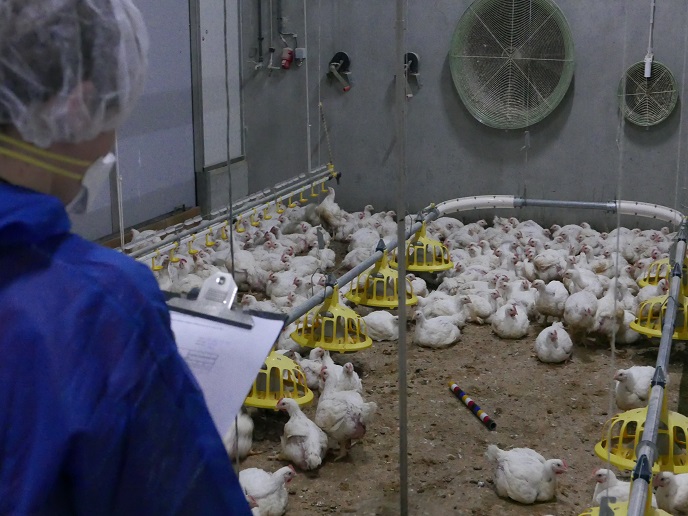Curbing antimicrobial drug use in livestock becomes more viable
Modern livestock production faces major challenges. Global population growth means food production needs to considerably increase over the next decades. However, the insatiable demand for animal food products cannot be met by current farming methods . Efforts to maximise production often involve overuse of antimicrobial drugs. “Just like for humans, antibiotic overuse in livestock can lead to the development and spread of antibiotic-resistant bacteria. Although the EU has banned the use of antibiotics as growth promoters in animal feed, thousands of tonnes are still used for therapeutic reasons in livestock ,” notes Hans Spoolder, coordinator of the EU-funded HealthyLivestock project. But nowhere are farming practices so intensive as in China, which in recent years has shifted towards highly cost-efficient intensive livestock production systems. This has been accompanied by the use of antimicrobials to keep animals healthy and maintain productivity: the country currently consumes a large share of the global veterinary antimicrobials. Over-reliance on antimicrobials has become one of the key issues of concern in EU and Chinese livestock farming. The main objective of HealthyLivestock is to reduce the use of antimicrobials in the pig and broiler industry in Europe and China, as well as the subsequent residues in the food chain and the environment. It aims to do this by improving animal health and welfare without compromising productivity.
Strengthening biosecurity and animal resilience
The first step towards improving animal health and welfare has been to analyse and score the main risk factors associated with the prevention of disease spread between and within farms. “We then established performance indicators to assess and monitor the health and welfare state. We developed and applied two innovative tools to assess biosecurity risks in pig and broiler farms and created tailor-made herd health plans for each farm,” explains Spoolder. The biomarkers used comprised direct and indirect signs of infectious diseases, such as clinical symptoms and lab analysis results regarding bacteriology, virology and serology. Researchers are also studying ways to improve the ability of pigs and broilers to deal with pathogenic diseases with minimal loss of function, by improving welfare and gut health. The work is focused on the development of animal-friendly farming systems, use of probiotics and prebiotics for improving gut health and traditional Chinese medicine for lowering gut inflammation. Experiments involving different hatching treatments are underway. Hatchability and chick quality, mortality, behavioural observations, responses to disease challenges and slaughter yield are measured and used as indicators for resilience.
Early disease detection methods
To better manage livestock, project partners are developing precision livestock farming techniques – smart tools that enable close monitoring of animals on farms. These tools will identify health problems, both generic and specific, in an early stage. “Studies on the use of automatic weighing platforms for monitoring the weight of poultry are ongoing. Such platforms will eliminate the need to conduct periodic manual weighing, will be more reliable, save time and prevent stress,” adds Spoolder. At pig group level, promising results were obtained related to the automated detection of tail biting. The identification of intestinal disorders through video analyses of pig behaviour is still ongoing, but results so far look positive.
Targeted medication
Ultimately, targeted therapy drugs and alternative medical practices will reduce the amount of antimicrobials used by targeting specific individuals or sub-flocks instead of all animals. Project activities will reduce the need to use antimicrobial drugs in pigs and chickens and tackle antimicrobial resistance. Furthermore, they will foster the development of common legislation and standards, boost Chinese-European collaboration in the livestock sector and promote Global One Health.
Keywords
HealthyLivestock, livestock, pig, antimicrobial drugs, broiler, antibiotic-resistant bacteria, targeted medication



